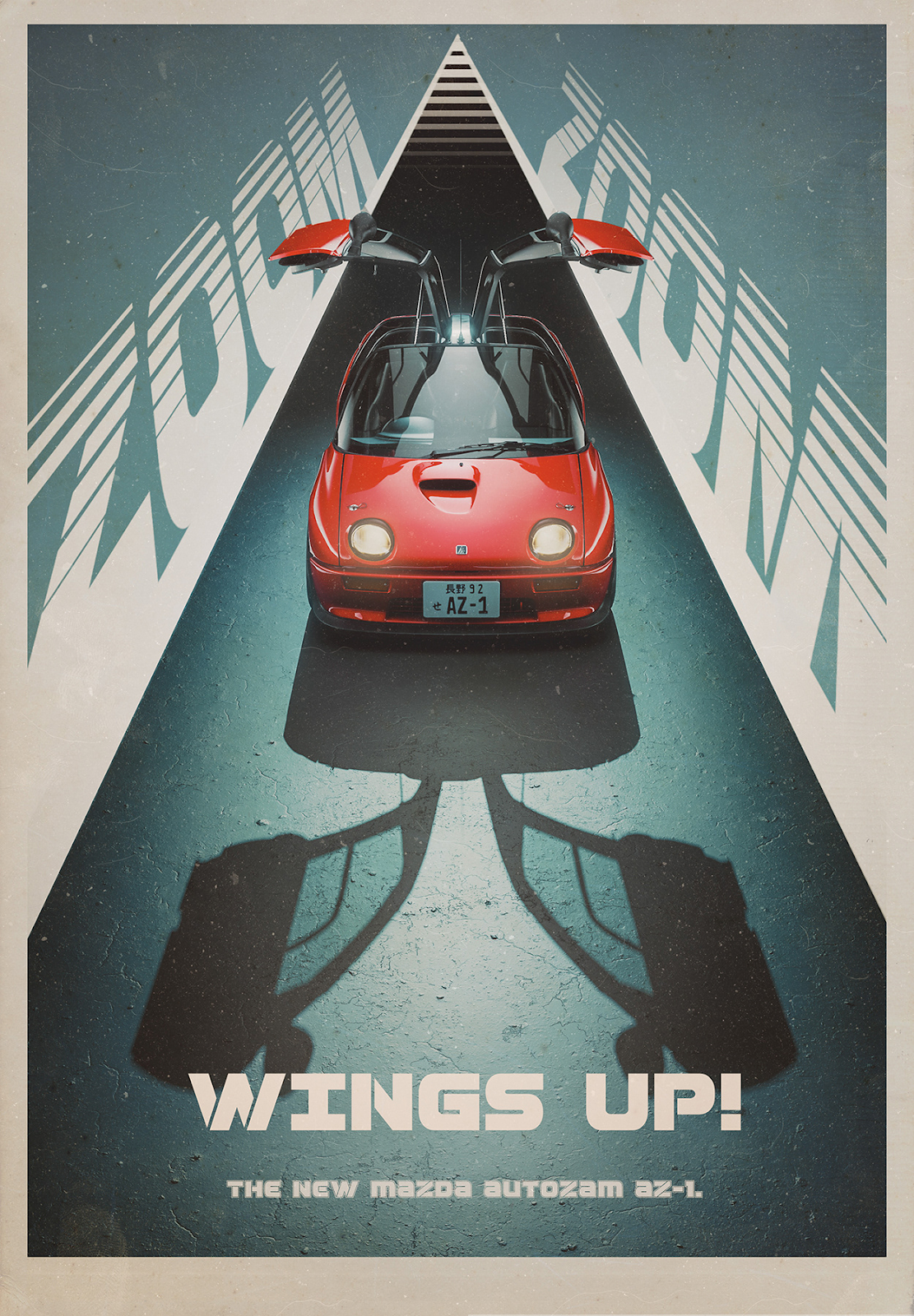History of the Kei car segment The Japanese government created a car segment known as Kei Jidosha or commonly known as Kei car. The year is 1949 Japan has just returned from WW2 and are badly injured in terms of economy. During this period Japan was primarily into the manufacturing of two wheelers, to kick start the four-wheeler manufacturing the Japanese government ensured that the Kei cars would be cheaper to buy insure and tax. The growth was slow, but the first ever actual Kei car was from Suzuki it was the Suzuki sunlight produced in the year 1955 with both 2 and four stroke engines. Some would say the landmark vehicle for the Kei Jidosha would be the Subaru 360 also known as the ladybug, this was followed by the Honda N360 which proved that Kei cars were a viable option not just for commercial purposes because previously this segment was better known for producing work trucks. The most famous Kei Jidosha Built by Suzuki and sold by Mazda under the
name Autozam the Az1 was perhaps the most quirky and cool Kei car ever
produced. The Autozam A1 was particularly quirky and stood apart from other
sporty Kei cars like the Honda Beat or the Suzuki Cappuccino, due to two main
features, one was its doors and the other was its engine layout. The Autozam A1
came with gull wing doors and it was a mid-engine car. The engine powering this 726kg car is a 3-cylinder turbo 650cc engine built by Suzuki, producing just 63hp, the car was later completed by Mazda who sold it under the brand Autozam. The tiny 650cc engine produced 63hp only, to extract this power one would have rev the engine to almost 9and a half thousand rpm, this added to the fun to drive quotation. The car was successful and Suzuki who had initially abandoned the project wanted to sell a similar version called the Cara. |
The Az-1 never gained much success unlike the car its engine was derived from the Suzuki cappuccino. This was because it was notably more expensive than its contemporaries, with a price tag of 1.49 million yen it was just a little cheaper than the Mazda MX-5. This expensive price tag led the car to have a short life span and only fewer than 4,500 cars were ever sold. The AZ-1 was meant to be a simple car for the enthusiast, this meant that it had very basic interiors and the gullwing doors weren’t hydraulic unlike the Mercedes SLS, this led to shorter people struggling to close the door once seated. The car had a steel chassis clothed in body panels made of glass-fiber reinforced plastic to save weight. Suspensions were MacPherson struts all round the mid-engine was mounted transversely, between the rear wheels, this led to front to rear weight distribution being good at 44:56. |
 |
| https://www.motorbiscuit.com/wp-content/uploads/2021/10/1993-Autozam-AZ-1-Mazdaspeed-rear-3_4-view.jpg |
The driving experience was highlighted by
the whoosh of the wastegate and the very quick steering, with just 2.2m turning
radius from lock to lock. But no power slides could be achieved, the light
front end meant that it requires some amount of skill to steer it fast through corners. |
The interior is very narrow, and the two occupants are seated very close to one and other. The glasshouse must be a major talking point or design element that it possesses, it also helps with improving visibility largely. The AZ-1 is lower than the Lamborghini Diablo at 1150 mm tall, a car with which it strikes a resemblance with. This is something that one realizes once they get into the cabin, anyone above 5.9 would really struggle to fit.
The whole Kei Jidosha car segment is quirky and in that the AZ-1 manages to further stand out as a quirky sports car, a car that embraced the car culture from the time it debuted. This is a car that every car enthusiast must experience.







Comments
Post a Comment